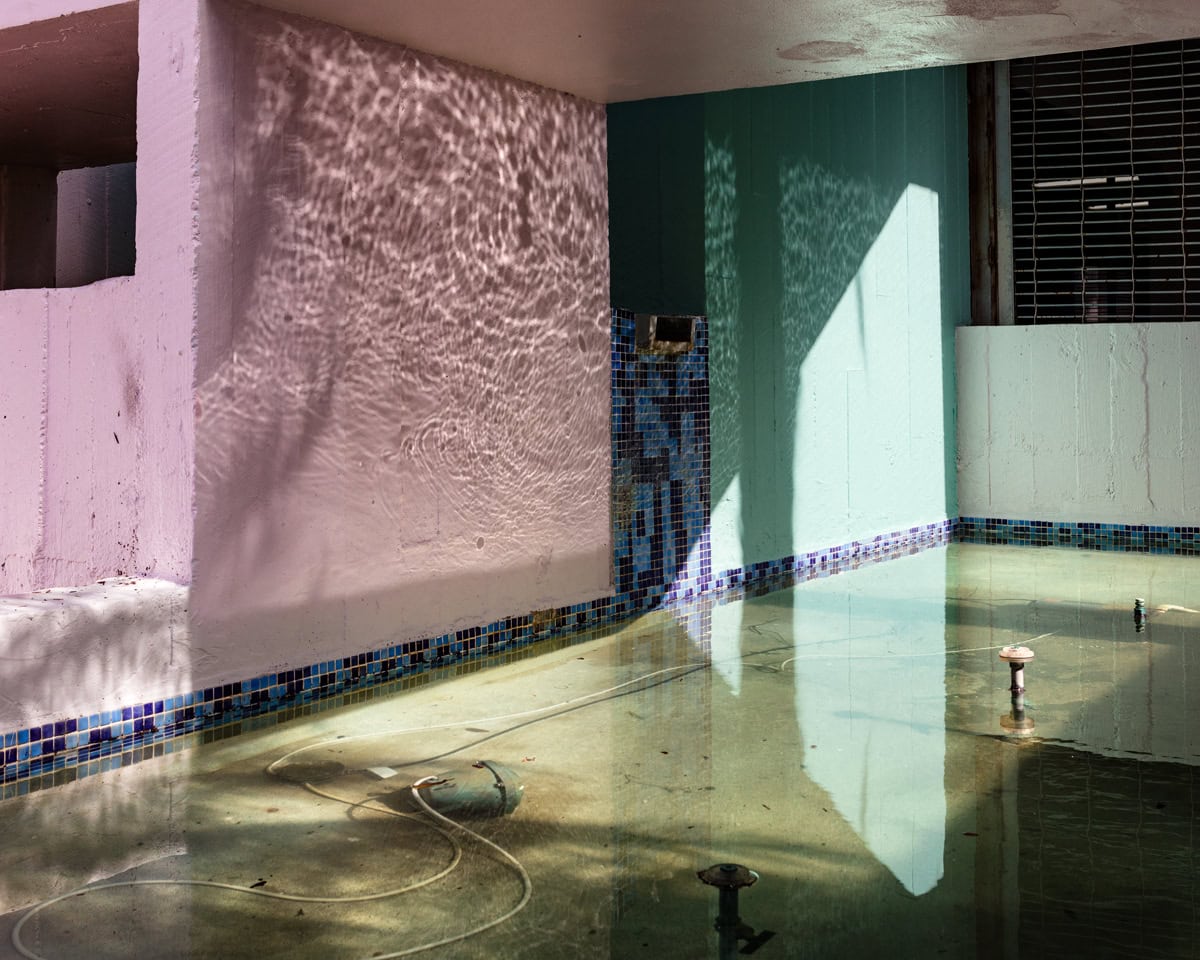
When artist Anastasia Samoylova moved to Miami in 2016, it was the hottest summer on record.
There are many words to describe the heat of summer in the Southern United States—humid, stifling, buggy, sweaty, steamy, heavy, sticky. But descriptions can only go so far, and words alone cannot fully convey the certainty that air conditioning should be a human right. Records show that Samoylova’s first summer in Florida would have been particularly intense [1]. And then, in 2017, as summer turned to fall, Hurricane Irma made landfall.
Samoylova has admitted in interviews that she did not take the Category 5 hurricane seriously. She describes how her family didn’t evacuate, and, by the time the winds began to pick up, gas stations were empty. They were one of the few families in their building that stayed through the storm, even as Irma prompted the largest mass evacuation in Florida’s history. Irma was the strongest storm to hit the continental United States since Hurricane Katrina in 2005, and the widespread damage even prompted a meme-able name: Irmageddon [2].
It was after this harsh welcome to the Florida coast that Samoylova began her ongoing photography series FloodZone. The series is a study of a place in deep existential crisis. Taken primarily though not exclusively in Miami, the photographs simmer with the sense of impending doom that permeate many aspects of life in Southern coastal cities. Samoylova’s photographs are also unsettlingly, strikingly beautiful, awash with sunlight and tropical tones. In these recognizable images of carefully marketed leisure, the cracks are beginning to show.
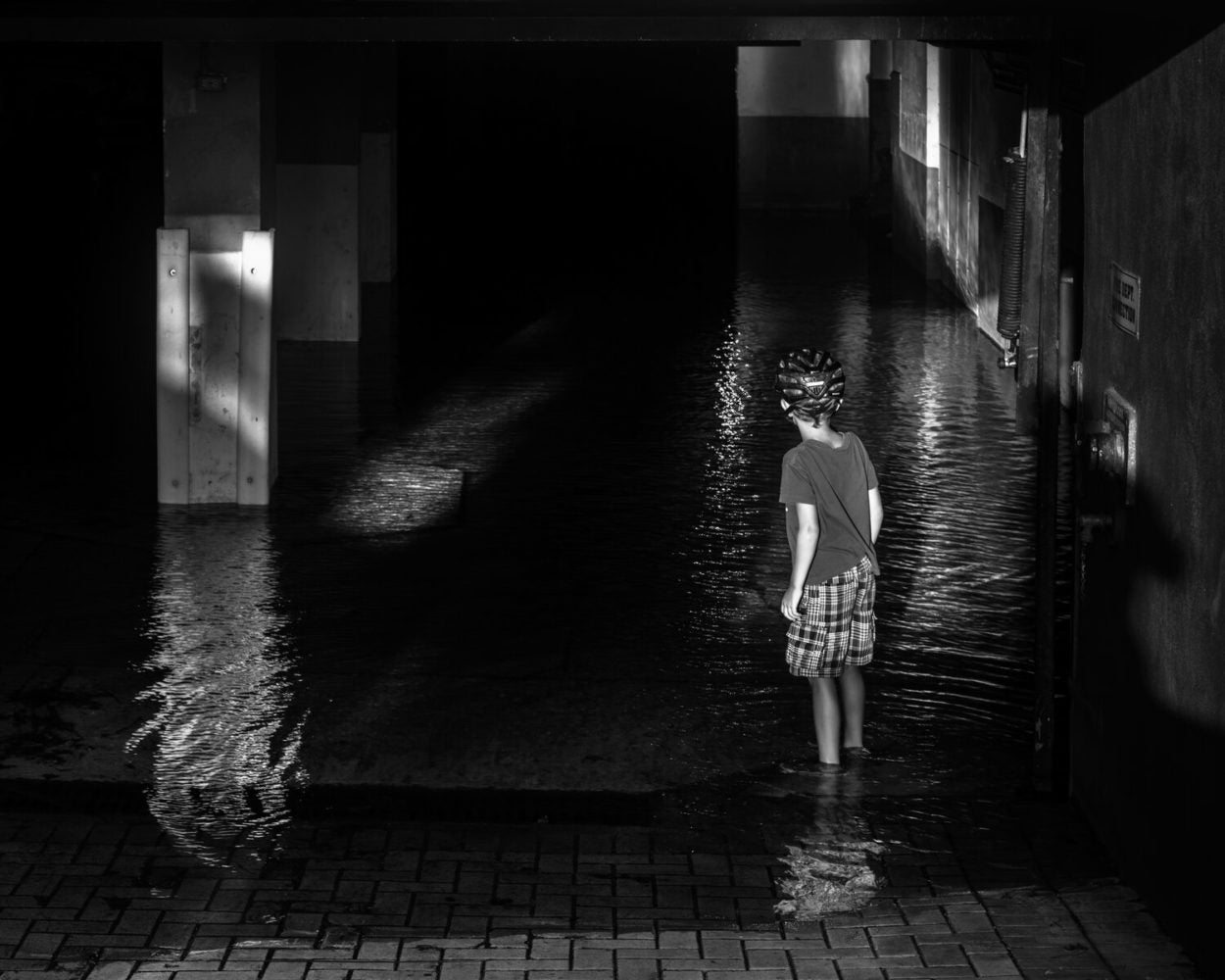
In FloodZone, as the name would suggest, water is everywhere. Sometimes it’s literal—water seeping onto roads or rising against the barriers of beach houses. Other times it’s more subtle, implied by piles of sticks and debris, rust on a car door, or mud and dirt drying on walls. Perhaps most compellingly, water also appears as a fantasy. In the most effective images, Samoylova captures luxury apartments mid-construction, with rusted fences and concrete walls wrap in half-concealing glossy renderings of the high-priced paradise to come. These photos are strangely flat, with the renderings blending in nearly seamlessly with their real-life surroundings. The images strive to create a constant oscillation between what we know to be true, what the city’s developers choose to reveal, and what lies just out of sight in the fringes of the sunset.
The project has been a critical success. The series was compiled into a glossy book in 2019, and FloodZone has been presented as an exhibition in Miami, Tampa, New Orleans, and Amsterdam. There have been reviews in The New York Review of Books and The Washington Post, among other publications. As of this writing, the book is currently sold out and new stock is pending. Perhaps it’s the dissonance between the highly stylized, careful curated shots and the impending (and present) horror that prompts the artist and much of the commentary around the project to deem these photographs Not Like Other Disaster Photos. Or, put another way by artist David Campany in the poetic essay included in the book, “Paradise is as photogenic as catastrophe” [3].
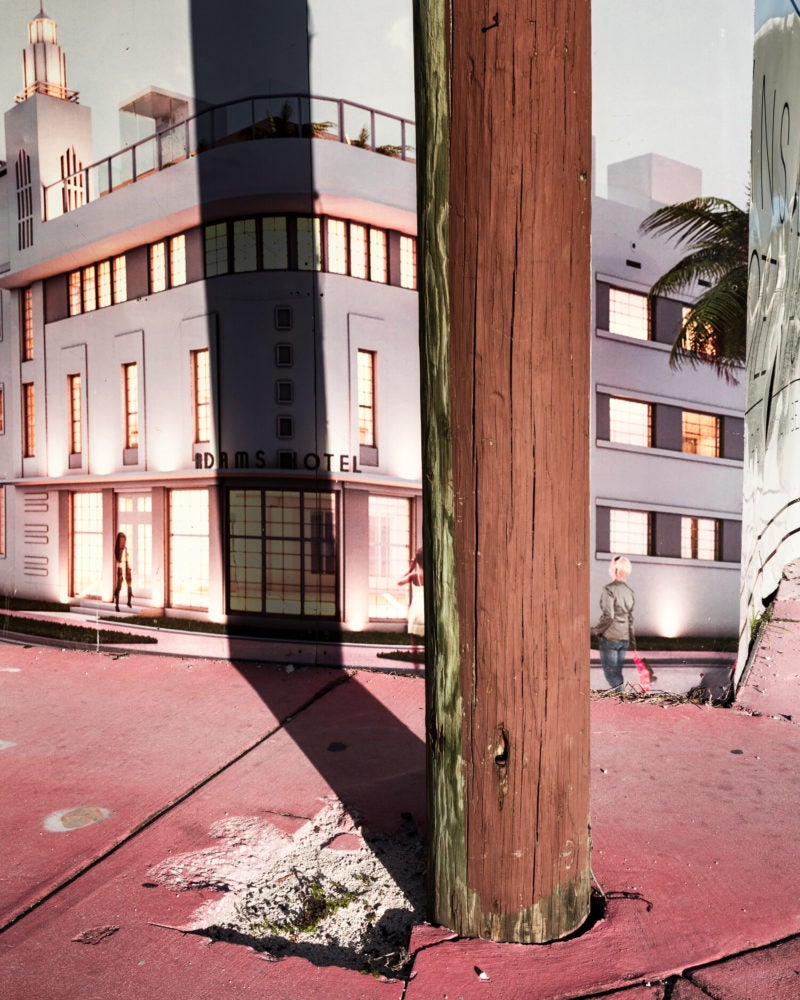
Here are a few things we know about paradise and catastrophe: in a ranking of the world’s cities most exposed to coastal flooding, Miami ranks ninth, below Rangoon, Myanmar, and above Hai Phong, Vietnam [4]. Miami Beach, which is essentially built on a swamp barely above sea level, is projected to see one to three feet of sea level rise by 2070, with the possibility of total submersion by the end of the century [5]. As the oceans rise, saltwater infiltrates freshwater aquifers, throwing the future of drinking water and agriculture into flux. The Biscayne aquifer, which provides drinking water to around 4.5 million people in Miami Dade County, is particularly at risk [6].
None of this is a secret. And yet, Florida ranked second in numerical growth for population from 2018-2019 [7]. Developers who publicly deny the rising sea levels privately buy and build farther in-land, slowly displacing communities such as Liberty City, an area where half of households earn less than $20,000 annually [8]. Climate gentrification, a term barely in the mainstream lexicon, is widespread and commonplace, particularly in the Southeastern United States.
With all this in mind, Samoylova’s photographs come off less like meditations on a crisis in a beautiful place and more like a eulogy. Indeed, many of the images look rather apocalyptic, tropical palette and all. The city sometimes appears as if just on the other side of catastrophe, initially full of promise and then quickly, quietly evacuated. The conspicuous lack of people in FloodZone contributes to this sense of abandonment. The series is primarily comprised of landscapes, and this triangulated space between architecture, land, and water seems to be where Samoylova is most comfortable as an image-maker. The few figures who appear are turned away, or obscured in shadow. The handful of animals are much the same, often only shown partially or in detail—the head of a rooster, the belly of an alligator, the mid-section of a snake. Among the sun-drenched concrete, bent palm trees, and flooded walkways, the living are an uneasy bunch, skirting the edges of Samoylova’s vision.
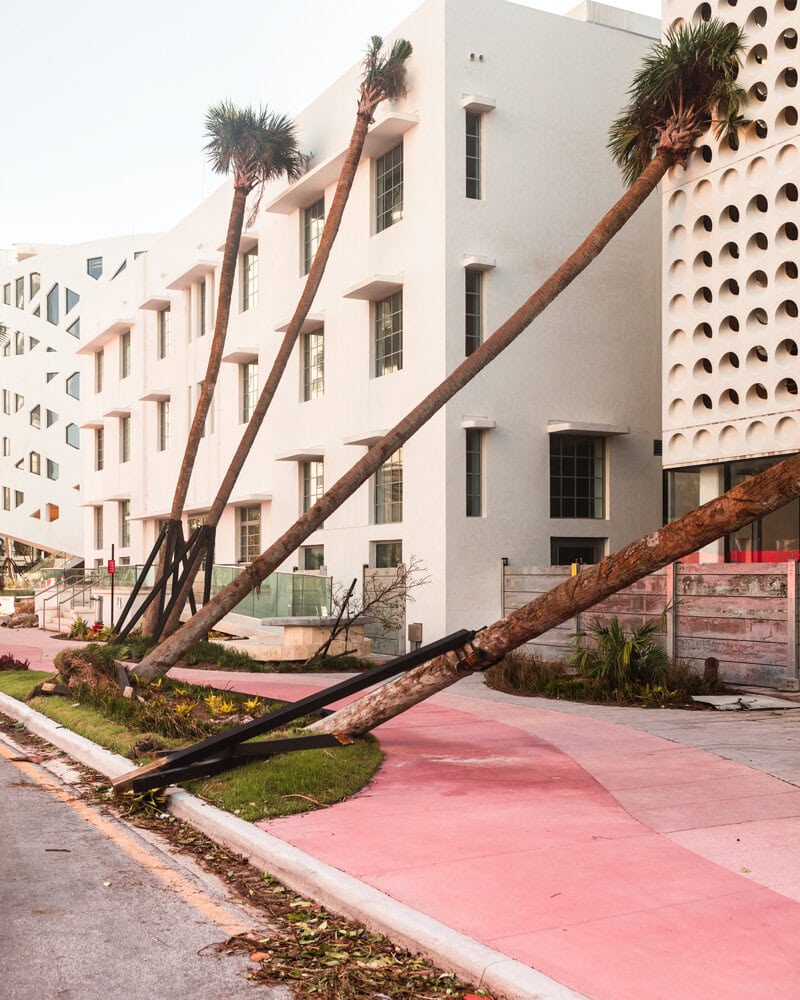
While disaster photography is sometimes criticized for sensationalizing destruction, or for catering to the gaze and consumption of the gawking privileged, FloodZone takes a curious (though perhaps equally discomfiting) approach. Considering the subject matter—climate crisis, the end of the world—the photographs are surprisingly delightful visually. Samoylova’s use of color and light demonstrates an awareness of what draws the eye: the emerald green hull of a ship shimmering like silk in the sun, leaves floating leisurely in a pool, an evening sunset casting golden beams into the ocean. Even the black and white photos, which are more sparingly interspersed with the color photos, play off shadows and reflective surfaces to draw the viewer into the hot, dreamy atmosphere. In many other photos, pink, a color common in marketing Florida’s beachy allure to tourists, is everywhere—painted on sidewalks, on moss-covered buildings, in curtains behind windows.
Elements of commercial and fashion photography are most obvious in the images of construction sites half concealed by promotional posters. Looks like Balenciaga show, reads one Instagram comment on an image of a construction fence covered by a rendering of a couple embracing in a luxury pool. Perhaps this commenter is on to something. The Balenciaga show they reference appears to be the Resort 2020 collection, in which models posed stone-faced in front of large printed backdrops of nature scenes. The collection was heralded by Vogue contributor Nicole Phelps as an “apparent indictment of power and corruption made all the more chilling for being wrapped up in a come-on to commerce” [9]. But do aesthetics amplify our understanding, or simply serve as a comfortable wedge between ourselves and horror? Does glossy irony fall flat as a shallow attempt at meaningful engagement, or does it function as an open door to those who might not look otherwise? Fashion isn’t often asked these questions, but photography is.
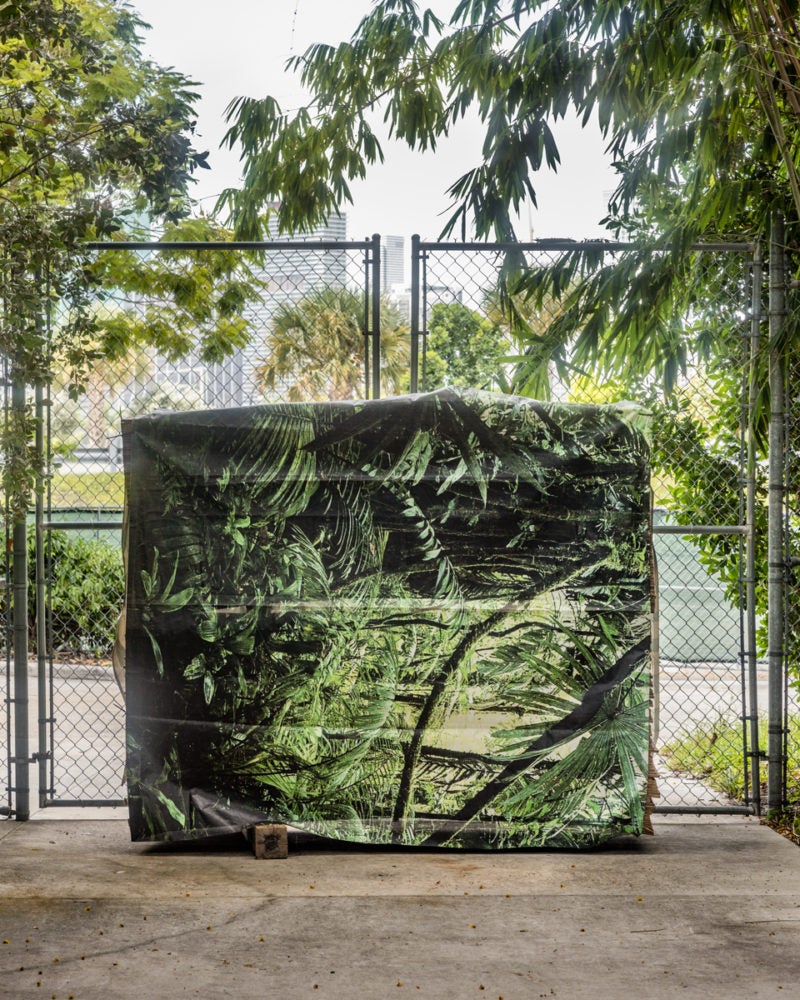
In July 2020, Miami found itself with an unsavory new title. An infectious disease expert at the University of Miami declared the city to be “the epicenter of the pandemic” [10]. At the same time, a hurricane season predicted to be even worse than usual nears its peak, as a swirl of storms in the Atlantic Ocean approached Florida [11]. That the pandemic has exposed the deepest flaws of capitalist society is a popular consensus, the inadequacies of the national way of life having been laid bare. There’s a sense that we’ve been given a Band-Aid when we need a tourniquet. The mood is definitely proto-apocalyptic, but Disney World is open.
The photographs in FloodZone, with their themes of denial, dying, and drowning amid an allusion of carefree paradise, seem—like a lot of art from the recent past—eerily prophetic. The absence of people and the construction sites on pause reinforce this unintentional connection. It’s funny how we look to the past for portentous signs. But Samoylova’s work doesn’t predict the future, and it doesn’t give us a game plan either. If there is a message, perhaps it is simply this: when the waters rise, evacuate.
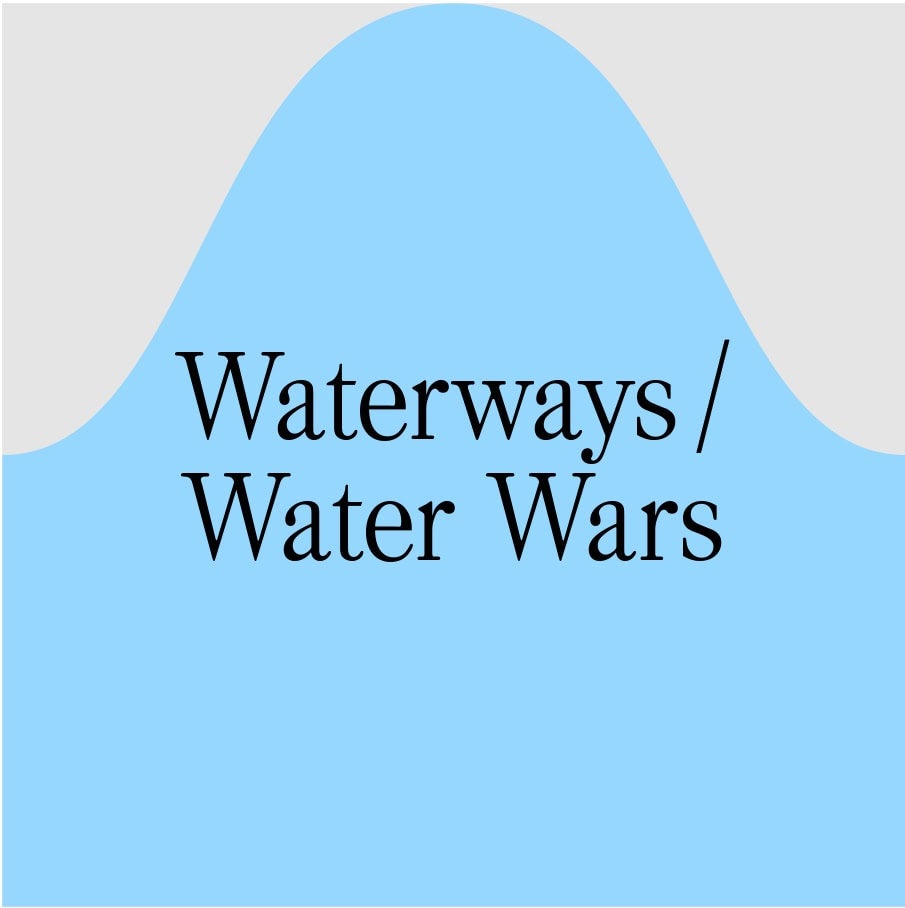
This artist project is part of Burnaway’s yearlong series on Waterways / Water Wars.
Find out more about the three themes guiding the magazine’s publishing activities for the remainder of 2020 here.
[1] Andrea Thompson, “2016 Officially Declared Hottest Year on Record,” Climate Central, January 18, 2017.
[2] “Irmageddon: Thousand of Miamians Just Had Their First Taste of Hurricane Misery,” Miami New Times, September 13, 2017.
[3] Anastasia Samoylova, Floodzone, 2019, Steidl.
[4] “Rankings of the World’s Cities Most Exposed to Coastal Flooding,” OECD, 2007.
[5] Daniel Raimi, Amelia Keyes, Cora Kingdon, and James Round, “Florida Climate Outlook,” Resources, March 18, 2020.
[6] Ibid.
[7] “Top 10 States in Numeric Growth, 2018 to 2019,” United States Census Bureau, December 30, 2019.
[8] Ian Stewart and Lulu Garcia-Navarro, “Building For An Uncertain Future: Miami Residents Adapt To The Changing Climate,” NPR, March 31, 2019.
[9] Nicole Phelps, “Balenciaga Resort 2020,” vogue.com, November 5, 2019.
[10] Greg Allen, “Miami Is Becoming The ‘Epicenter of the Pandemic,’ Experts Warn,” NPR, July 14, 2020.
[11] Tony Marrero, “Atlantic weather system expected to develop into tropical storm or depression,” Tampa Bay Times, July 27, 2020.




